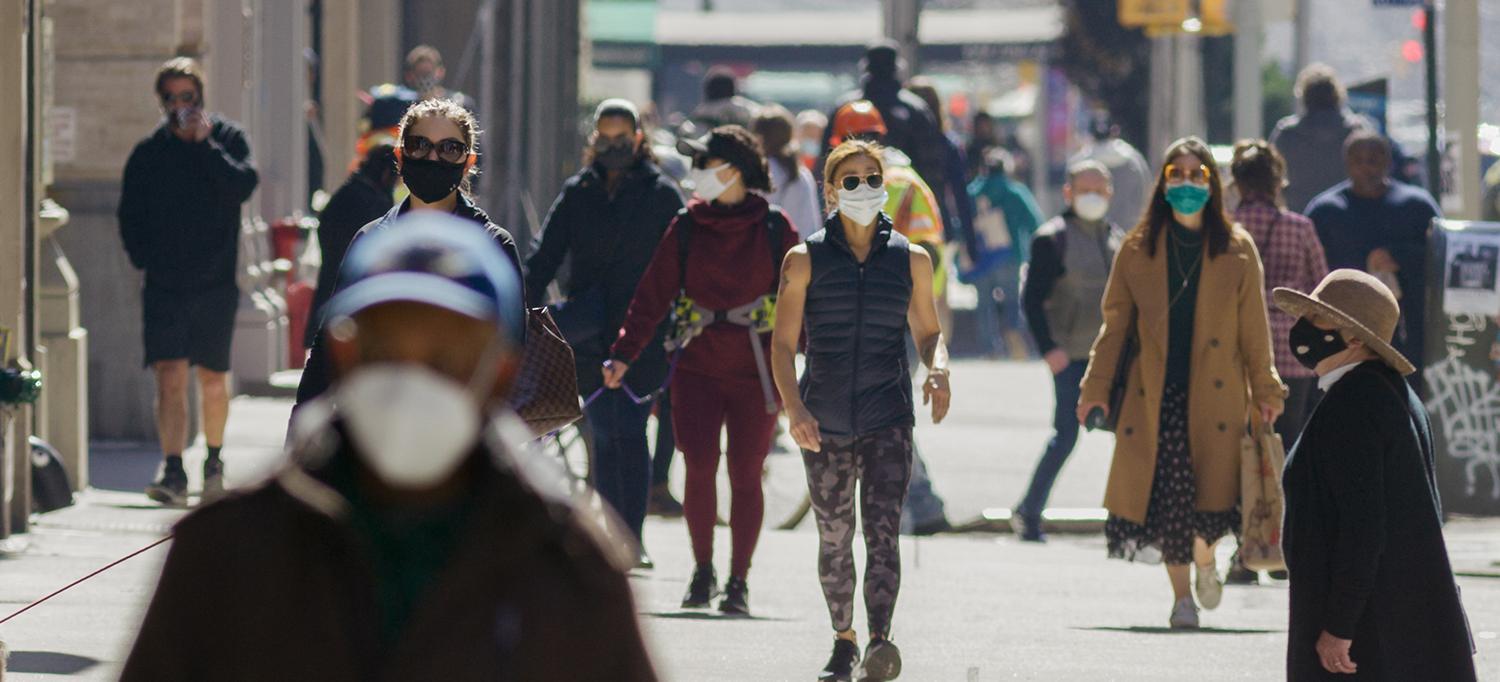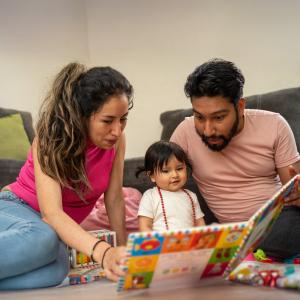
Photo: blvdone/Adobe Stok
An extensive review by NYU Langone researchers of the largest contact tracing program in U.S. history found that the program’s rollout during the COVID-19 pandemic was remarkably effective, but it also identified areas that could be improved in similar situations in the future.
From June 1, 2020, to December 31, 2021, a research team in the Department of Population Health at NYU Langone evaluated the city’s tracing efforts—specifically NYC Health + Hospitals’ Test and Trace program. Test and Trace, also known as T2, was done in partnership with the NYC Department of Health and Mental Hygiene, multiple other city agencies, and many community partners.
The joint team found that the massive effort, which mobilized thousands of workers, succeeded in its goals of intensive community engagement, equitable rollout of testing services across neighborhoods, and remarkable timeliness for case notification. The researchers also found room for improvement in future readiness, including strong gaps in the supply chain for testing supplies and a need for more capacity in mobile testing and more-streamlined data collection.
At the outset of the pandemic, New York City was the epicenter of transmission in the United States. Between March and May 2020, more than 200,000 cases of COVID-19 were confirmed in New York City, but due to lack of testing, the total number of cases during the pandemic’s initial wave remains unknown. Mortality rates were high, with more than 32 percent of hospitalized patients dying from the virus.
To lessen community spread of COVID-19, a disease with no effective treatments or vaccine at the time, public health leadership in New York City rapidly worked to begin identifying people who had been exposed to someone infected with SARS-CoV-2, the pandemic virus.
Rapid Deployment
By June 1, 2020, three months into the pandemic, NYC Health + Hospitals (H+H) had mobilized thousands of workers and launched the T2 program, the evaluation found.
The tracing program’s goals were to identify and isolate cases by providing city residents with free COVID-19 testing at as many accessible locations across the city as possible, to reduce transmission through rapid case notification and contact tracing, and to provide resources to residents in need of support during isolation and quarantine periods.
“As perhaps the largest program of its kind across the country, New York City’s Test and Trace program was created and scaled in record time,” said the evaluation team’s leader, Lorna E. Thorpe, PhD, MPH, who also serves as director of the Division of Epidemiology in the Department of Population Health at NYU Grossman School of Medicine. “Our evaluation team identified many strengths and successes in the rapid formation and scaling of the T2 program, but also identified improvements that should be considered, including the improvement of working conditions for employees hired through contractors.”
Reach, Equity, and Timeliness
After an extensive, 18-month evaluation of the T2 program, Dr. Thorpe and other leaders in the Department of Population Health—Carolyn Berry, PhD; Anna Bershteyn, PhD; and Nadia S. Islam, PhD—published their findings in a report. They observed the following:
- The T2 program placed a strong emphasis on community engagement by ensuring all frontline staff hired were New York City residents, and in particular were from neighborhoods hardest hit by the virus. The program also included more than 50 community-based organizations across all boroughs to help ensure that the program was implemented as equitably as possible.
- H+H rapidly became the largest provider of SARS-CoV-2 testing services in New York through contracts with third-party labs and testing vendors, as well as through new hiring. By introducing mobile testing, the T2 program was able to reach diverse communities and ensure that most city residents did not have to travel far for testing. H+H performed approximately 25 percent of all testing in the city during the evaluation period.
- Throughout the evaluation period, 1.45 million COVID cases were reported to the T2 program. Before the Omicron wave of the virus, which arrived mid-November 2021, T2 staff had made contact with 89 percent of all reported cases, within a median of 2 days for case notification. A total of 78 percent of all cases completed interviews. There were no disparities in case completions across demographic groups or neighborhoods.
- The Omicron wave of the virus dramatically impacted the reach of the T2 program. The dramatic surge of cases between mid-November 2021 and January 2022 exceeded the program’s capacity. The number of cases who were reached and interviewed by T2 workers fell by more than 40 percent, and just over half of the cases reached provided information on recent contacts who may have been exposed to the virus.
- The evaluators found that T2 workers were more successful in reaching contacts with positive test results than in tracing exposed contacts of cases. Only 59 percent of contacts were successfully reached, and in those cases the T2 program often learned about contacts outside of the 10-day monitoring period for COVID symptoms. Evaluators also noted that performance in contact tracing fell during variant wave surges in infection.
- A suite of the essential services provided by the T2 program, known as Take Care services, helped support cases and contacts in their homes during the isolation and quarantine periods. Early in the pandemic, H+H managed over 1,200 hotel rooms, and in cooperation with community-based organizations, Take Care met community needs that included food delivery, at-home care packages, dog-walking services, and cash assistance. Evaluators found that 1.1 percent of all the cases and contacts who interacted with T2 were housed in hotel rooms.
- Case notification rates were higher in neighborhoods with majority-Black or majority-Hispanic populations, compared to neighborhoods with fewer residents belonging to that race or ethnicity. The exception was in neighborhoods with high concentrations of public housing, where case completion rates were lower—suggesting that increased efforts are needed to partner with public housing–facing community organizations to build trust and bolster community engagement.
Challenges and Lessons Learned from T2 implementation
Supervisors and staff interviewed by the evaluation team identified a number of challenges.
While the program tried to keep staff working in their own communities, this did not always happen. Some staff were asked to travel to other parts of the city, and language barriers between staff were reported, particularly during telephone handoffs involving crucial information about cases and contacts. T2 contact tracing staff also cited lengthy telephone scripts and lack of flexibility in being able to reduce the volume of calls to families—even upon request by call recipients. One workaround, say the evaluators, could be to automate text messages with push notifications in subsequent communications between T2 staff and cases or contacts.
Some frontline staff and supervisors reported job dissatisfaction due to issues such as inadequate break time, supervisor quality, and other undesirable working conditions.
With respect to Take Care services, evaluators found that social service referrals for basic necessities were requested by 27 percent of cases. However, only half of the 16 percent of contacts who completed intake forms were successfully connected to a Take Care service. The evaluators cited this drop to individuals who could not be subsequently reached by T2 staff, or who were reached but declined the service. According to evaluators, these services had different budgets depending on neighborhood, and they waned over time. Future planning should include better coordination and standardization of these services across neighborhoods.
To undertake case notification and contact tracing, the T2 program used the Salesforce data platform. While the data system was originally able to handle large caseloads and surges of infections, T2 staff reported that it became increasingly difficult to make programmatic changes to the data platform as the pandemic rapidly shifted during the Omicron wave and beyond. Data sharing across relevant agencies was also a major challenge at times due to differences in regulatory clearances.
Another barrier during the COVID-19 pandemic was a breakdown in trust among numerous institutions, including government, the media, and the pharmaceutical and healthcare industries. To build trust, Dr. Thorpe and colleagues recommend that future contact tracing initiatives build capacity to address misinformation through education and communications campaigns that dispel medical misinformation and myths before they become entrenched in communities.
In addition to Dr. Thorpe, Dr. Berry, Dr. Bershteyn, and Dr. Islam, co-investigators include Marie Bragg, PhD; Margaret Paul; Marc N. Gourevitch, MD, MPH; Kelly M. Doran, MD; Andrea Titus, PhD; Samrachana Adhikari, PhD; Brian D. Elbel, MD, PhD; Chau Trinh-Shevrin, DrPH; and Joseph E. Ravenell, MD. Core staff included Rachel Masser, MPH; Stefanie Bendik, MPH; Sarah Conderino, DrPH; Michelle Chau, PhD, MPH; Rita Larson, MPH; Andrew Fair, MS; Chuan Hong, PhD; and Lorraine Kwok.
Media Inquiries
Sasha Walek
Phone: 917-838-9607
sasha.walek@nyulangone.org
